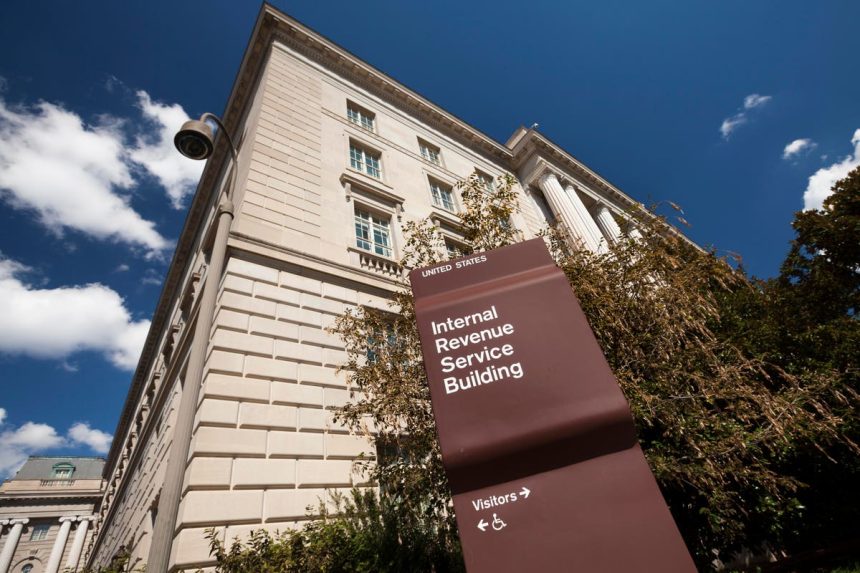IRS Commissioner Danny Werfel gave us a glimpse of what was coming last month when he suggested that taxpayers would see more changes at the agency. This week, he offered more details, announcing a series of initiatives as part of what is being called “a sweeping, historic effort to restore fairness in tax compliance.” Those initiatives include a sharper focus on high-income earners, partnerships, large corporations, and promoters abusing the nation’s tax laws.
The initiatives follow what Werfel describes as a “top to bottom review of enforcement work” at the IRS, thanks to increased dollars from the Inflation Reduction Act. The Act significantly boosted funding for the IRS, guaranteeing tens of millions of dollars over its operating budget for improvements and enforcement.
Millionaires
Werfel had previously indicated what some of those initiatives would look like, including prioritization of high-income taxpayer cases. Now, the IRS has made clear that it would intensify work targeting high-income taxpayers with outstanding tax debt. Specifically, he noted that for fiscal year 2024, the IRS has identified 1,600 millionaires who owe at least $250,000 in recognized tax debt who will be the subject of further enforcement efforts. The IRS says that dozens of Revenue Officers will be assigned to these high-end collection cases.
Previous efforts this year keyed to high-income taxpayers resulted in collections of $38 million from more than 175 high-income earners.
“This new compliance push makes good on the promise of the Inflation Reduction Act to ensure the IRS holds our wealthiest filers accountable to pay the full amount of what they owe,” said Werfel. “The years of underfunding that predated the Inflation Reduction Act led to the lowest audit rate of wealthy filers in our history.”
But Werfel repeated his promise that the IRS will ensure that audit rates do not increase for those earning less than $400,000. “Middle and low income filers,” he said, “will see no change [in audit rates] from pre-IRA historic lows.”
FBARs
The new initiatives also include increased scrutiny on high-income taxpayers who use foreign bank accounts to avoid disclosure and related taxes. As part of the Bank Secrecy Act, every U.S. person with a financial interest in, or signature or other authority over, one or more foreign financial accounts with an aggregate value of more than $10,000 must report the account to the Treasury Department each year. You’ll hear these reports referred to as FBARs. Failing to file FBARs when you’re required to do so can result in penalties.
An IRS analysis of multi-year filing patterns has identified hundreds of possible FBAR non-filers with account balances that average over $1.4 million. The IRS plans to audit what they consider to be “the most egregious potential non-filer FBAR cases” in fiscal year 2024.
Partnerships And Corporations
Passthrough and corporate entities won’t get a pass either. In 2021, the IRS launched the first stage of a compliance program focusing on large, complex partnership returns. The agency is now expanding that program to include other large partnerships. According to Werfel, by the end of the month, the IRS will open examinations of 75 of the largest partnerships in the U.S. These are not small businesses: on average, he says, these partnerships each have more than $10 billion in assets.
The IRS has also flagged ongoing discrepancies on balance sheets involving partnerships with over $10 million in assets. Those discrepancies, the agency notes, can be an indicator of potential non-compliance. In these cases, the IRS reports that taxpayers filing partnership returns are showing discrepancies in the millions of dollars between end-of-year balances compared to the beginning balances the following year, and those numbers have been increasing over the years without explanation.
As part of efforts to force compliance for high-risk large partnerships, the IRS will send notices to around 500 partnerships about those discrepancies. Depending on the responses from the partnerships, the IRS will add them to the audit stream for follow-up.
The IRS is also focusing on a specific kind of corporate fraud. According to the IRS, construction contractors are issuing Forms 1099-MISC/1099-NEC to what appear on paper to be subcontractors—but the subcontractors don’t actually exist. Instead, the recipient of the 1099 is a shell company with no legitimate business relationship to the contractor. The scheme, which is currently being seen in Texas and Florida, allows companies to claim a deduction for money that’s being paid out—even though the money is eventually returned to the original contractor. The IRS will be giving those transactions extra looks with both civil audits and criminal investigations.
Digital Assets, Including Crypto
Technology is also an area that the IRS is watching with interest. The IRS plans to continue its virtual currency compliance campaign to educate taxpayers about the need to report income and taxable events related to virtual currency like Bitcoin
BTC
Artificial Intelligence
Interestingly, technology is also helping the IRS take these steps forward. Werfel spoke enthusiastically about the potential for artificial intelligence, or AI, to allow the IRS to do its job better. Specifically, AI is helping the IRS to identify returns for audit in key areas. And, he says, it means that the agency can be more efficient. By investing in new analytics solutions, he said, the IRS can use technology to detect patterns, trends, and activities that they can link to tax evasion, freeing up employees to focus on other matters.
Werfel says AI and advanced technology can be excellent tools to promote tax fairness. For some time, he noted, the IRS has been falling behind and not able to monitor the activities and structures put in place by high-net-worth and sophisticated taxpayers to dodge taxes. “We have to catch up,” he says.
Now, Werfel says, this increased focus on high-income taxpayers, including large partnerships and corporations, should give middle and lower income taxpayers comfort that the IRS now has the same ability to look at the activities of those wealthy filers—something that wasn’t happening before at the same rates due to a lack of resources.
Scams
The emphasis on high-income taxpayers doesn’t mean that everyday taxpayers are being ignored. The IRS says it will also focus on ensuring audit fairness and protecting taxpayers from various scams and schemes. Scammers and fraudsters frequently target average taxpayers, Werfel explains, so the IRS intends to raise consumer awareness on these issues. That includes calling attention to the IRS Dirty Dozen. The Dirty Dozen is an annual list of common scams taxpayers may encounter. Many of these schemes peak during tax filing season as people prepare their returns or hire someone to help with their taxes. The schemes put taxpayers and tax professionals at risk of losing money, personal information, data, and more.
“The IRS is on the side of taxpayers, and we will be working to protect hard-working people from scammers or fraudsters who try to use the tax system for their schemes, whether it’s promising people inflated EITC amounts or tricking people into tax-related identity theft,” Werfel said. “Protecting hard-working taxpayers is a critical component to ensuring the success of the nation’s tax system, and the IRS will be working throughout the fall and into the 2024 filing season to take steps to help people.”
IRS Funding
To move these initiatives forward, Werfel stressed the need for continued funding for the IRS, saying, “A well-funded IRS is better for taxpayers.”
“The tax laws are already on the books,” Werfel points out. But, the IRS hasn’t had the funding to adequately enforce those laws for many years. That’s changing with IRA funds. “In terms of budget, we are energized by what the IRA is improving,” he says, expressing relief that the agency can make “long-overdue improvements.”
The IRS has also been ramping up its hiring. Budget cuts, an aging workforce, and attrition have resulted in understaffing. In addition to a lack of enforcement, that has resulted in a reduction in taxpayer services over the past decade. But over the past few months, that has been changing.
However, the IRS budget is again under debate, as Congress argues over next year’s budget. The country operates on a fiscal year— in this case, current funding for most government programs expires on Sept. 30. That means there could be a partial government shutdown if there’s no agreement in Congress before the next fiscal year begins on Oct. 1.
Even if Congress avoids a shutdown, the IRS budget could be cut. If the budget for the agency isn’t fully funded, Werfel says, “then we have to borrow from IRA to keep the lights on.” That means that the agency wouldn’t be able to make long-term investments to allow them to simply catch up from before. And, he says, the result is that “we will have drained modernization resources.”
And while the IRS may feel like a low priority for taxpayers, Werfel says that it’s a mistake not to fund the agency.
“The nation relies on the IRS to collect funding for every critical government mission — from keeping our skies safe, our food safe and our homeland safe. It’s critical that the agency addresses fundamental gaps in tax compliance that have grown during the last decade,” Werfel added.
According to the latest edition of the IRS Data Book, the IRS collects approximately $4.9 trillion in gross revenues, which accounts for about 96% of the funding supporting the federal government’s operations.
That means, Werfel says, “A good, healthy tax system is absolutely critical for the success of this country.”
Read the full article here




